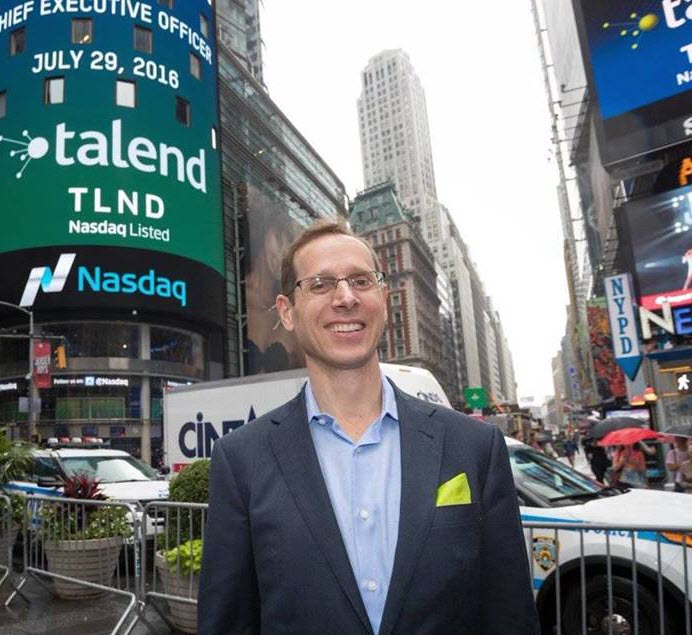 BIG DATA
BIG DATA
 BIG DATA
BIG DATA
 BIG DATA
BIG DATA
Ten months into his tenure as head of a public company, Talend Inc.’s Mike Tuchen (pictured) is establishing himself as one of Silicon Valley’s most accessible chief executives. So when he invited me to call the day after his company on Thursday announced 44 percent revenue growth – and profits that fell slightly short of expectations – I took him up on his offer to talk about the data integration market, Talend’s post-initial public offering performance and the joys and frustrations of the public market.
Were you surprised at the market’s immediate negative reaction to your earnings report Thursday?
We beat the top line but missed on earnings, so that was a bit of a mixed message. We’ve had to spend a lot of time talking to investors about setting expectations. We’d been accelerating growth for eight quarters in a row but now it’s leveling out. We’re cautioning them not to extrapolate [our past growth] forward because the world doesn’t work that way. Our stock is up 45 percent this year, so there’s clearly momentum in the business, but there may have been some whisper number out there that affected the share price.
Ben Graham [the father of value investing] said that the market is a voting machine in the short term and a weighing machine in the long run. We’re in this for the long run.
You’ve committed to growing only as fast as you can remain cash flow positive. How are investors reacting to that message?
It’s a unique message for recruiting talent because there are few $100 million companies that are cash positive and growing rapidly. It’s just good business. The market used to see companies that way 15 years ago, but it has kind of lost sight of those fundamentals. I wouldn’t be surprised to see more companies operate this way in the future, though.
This is the first public company you’ve run. What have been the biggest surprises?
When we reported our first quarter out of the gate last August, we scrubbed all the numbers but we didn’t look at earning per share closely enough. It turns out the models we used were based on the pre-IPO share count, which was literally a factor-of-five difference from the post-IPO count. [That made our EPS numbers look far lower than they really were]. These days automated robots scan for data and write the headlines [so we got crushed for a day]. We weren’t ready for that.
We’re also trying to educate people not to focus too much on billings. Billings are a mix of sales, renewals and services number all lumped together. They don’t actually track what’s going on in the business. Billings may look strong this quarter, but please don’t write that story because there’s going to be another quarter where billings come in light.
When your customers are buying more than a year in advance, it takes more sales time and involves discounting, all of which costs you money. You end up with different renewal dates for everyone. That drives both us and customers crazy. We’re deliberately reducing our pre-bill duration from 2.2 years two years ago to 1.25 years now, and we want to get to the point where all renewals come at the same time. It’s much simpler for everyone.
What would you tell an entrepreneur considering an IPO? Is this a good exit route?
It is by far the best exit route because you’ve got to up your game and build a company that can withstand public scrutiny. We’ve had a blast.
You mentioned on your earnings calls that you’re hiring higher-quality people than ever, many from your competitors. Does that indicate that this market primed for consolidation?
Our ability to hire has really, really increased over the last year. With a successful IPO, the stock doing well and revenue acceleration, other people can see what’s going on here. Because of that, we’ve stepped on the gas to get these people in the door faster.
What are the hottest trends in your market at the moment?
There are four hot trends in data integration that I see: The move to big data, the move to the cloud, self-service and real-time analytics. That last one has big potential. For example, if my car can look at my driving patterns and know that I usually drive home between 6 p.m. and 7 p.m., it can do a real-time lookup and alert me to a traffic jam far in advance. Or sensors can monitor usage data in my car and tell me to come in for service before something goes wrong. This is enabled by real-time predictive analytics and machine learning, which have a ton of interesting applications.
THANK YOU